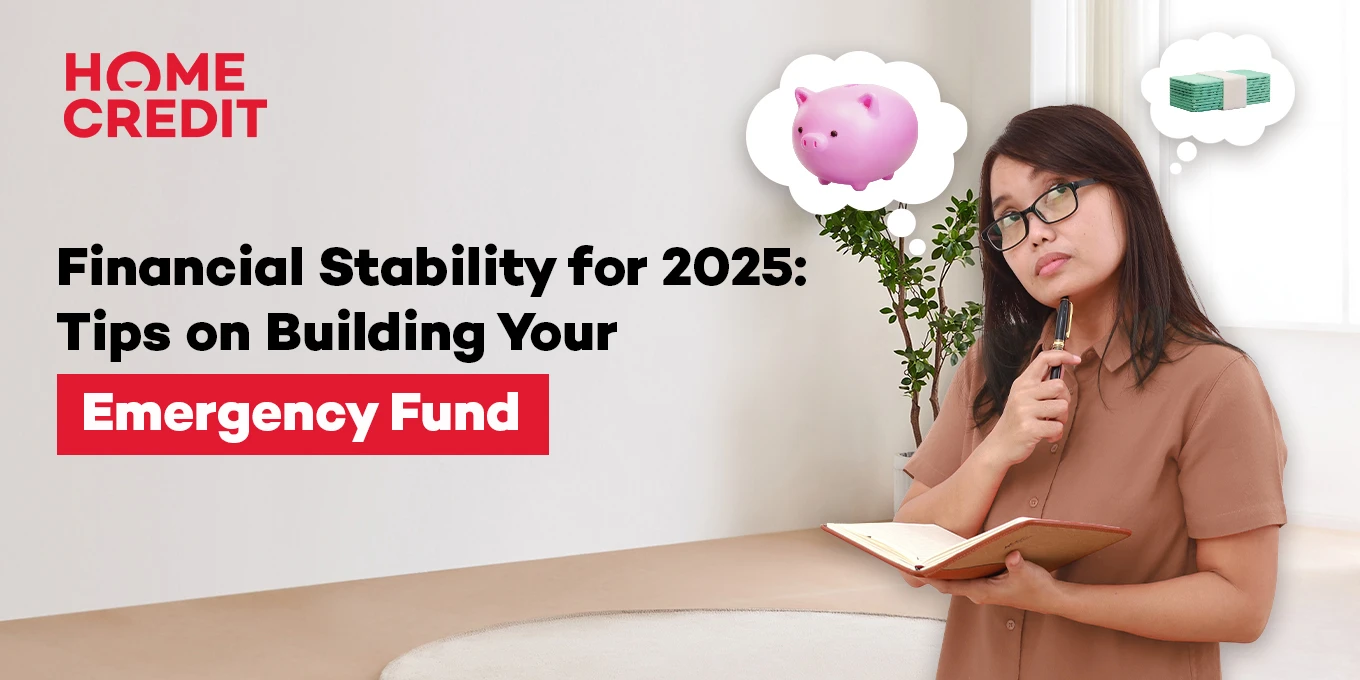From job retrenchment, medical emergencies, unforeseen calamities, and the fluctuating economy, these are just some of the unexpected challenges that can put a strain on everybody’s finances and can lead to physical and mental stress. As 2025 draws near, building an emergency fund is vital for weathering life’s uncertainties and achieving financial security. Here’s how you can start building an emergency fund and prepare for the year ahead.
What Is an Emergency Fund and Why Is It Important?
An emergency fund is a type of savings designed specifically for unexpected expenses. Unlike your traditional savings, this fund is reserved for emergencies, like:
- Medical emergencies including accidents
- Home or car repairs
- Loss of job or income
With an emergency fund in hand, you have an extra peace of mind in times of uncertainties without having to rely on your credit cards or borrowing from family and friends—saving you from the stress of accumulating debt.
Tip 1: Set a Savings Goal
How much should your emergency fund be? General rule is to save up for at least three to six months’ worth of your living expenses. This includes rent, food and groceries, utilizes, and transportation. For example, if your monthly expenses are ₱25,000, your emergency fund goal should be ₱75,000 to ₱150,000. You can adjust accordingly based factors such as family size, lifestyle, and income stability.
Tip 2: Track Your Budget
Where does your income go? Track your monthly salary or other income sources using an excel sheet or budgeting apps such as YNAB (You Need A Budget) and Mint, and categorize your daily expenses into essentials (bills and food) and non-essentials (entertainment) and identifying areas you can cut spending. For instance, you can buy grocery for two months and opt to cook at home instead of dining out to save money.
Tip 3: Automate Your Savings
Do you save regularly? Building an emergency fund requires consistency and dedication. Consider setting up automatic transfers through bank apps to your emergency fund from your salary bank account. We recommend saving at least 10% of your salary every payday. For most people, 10% is realistic and manageable regardless of income level, and lays a foundation to establish a healthy savings habit while allowing spending for other essential expenses.
Tip 4: Find Additional Sources of Income
Is your income enough to sustain your needs? Increasing your income sources can help you save faster. Explore side hustles that match with your skills or interest. If you love to write or create art, you can consider freelancing as a writer or graphic designer. Sites like Upwork and Freelancer offer freelancers a perfect hub to connect and collaborate with clients worldwide to find project-based work. Knowledge-sharing is also popular these days, and offering tutoring services in your free time can also help you earn more.
Tip 5: Supplement your emergency fund with insurance and medical loans
Is your emergency fund enough? In cases of extreme emergencies, you may need an additional safety net such as insurance or medical loans. Consider applying for HMO plans such as ones offered by PhilCare in partnership with Home Credit. This comprehensive HMO plan allows you to access HMO benefits such as unlimited medical consultations, laboratory, and diagnostic tests in 1,800+ PhilCare accredited hospitals and clinics available via Home Credit in 12 monthly installments with 0% interest. Read this article to know more about this HMO plan.
Building an emergency fund takes discipline, commitment, and patience. Once these qualities are met, you can enjoy financial readiness and the security knowing that you are well prepared to face whatever challenges the new year may throw at you.
Home Credit Tips
Published June 06


